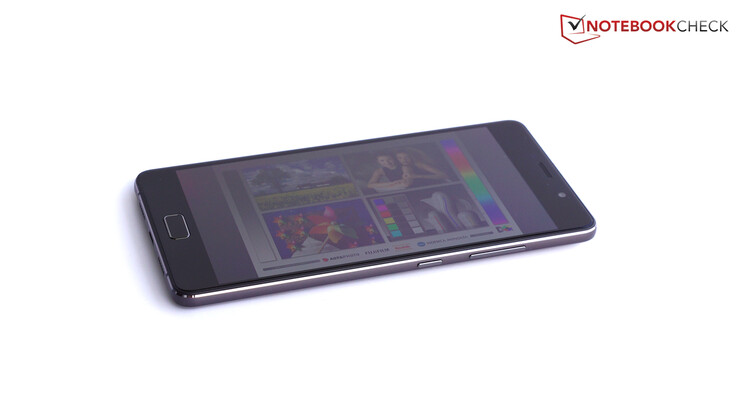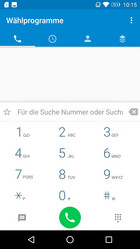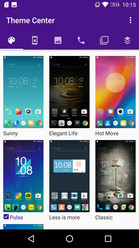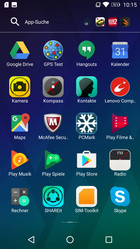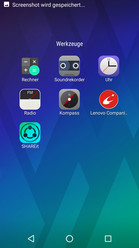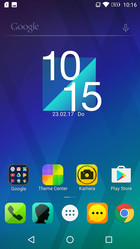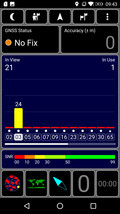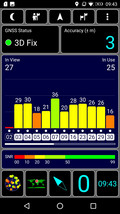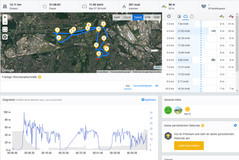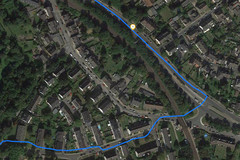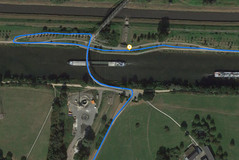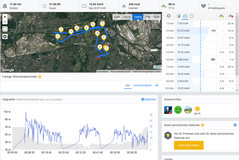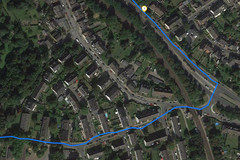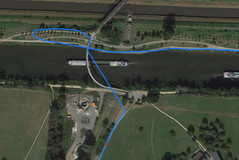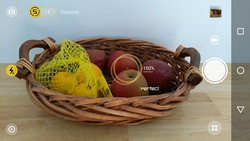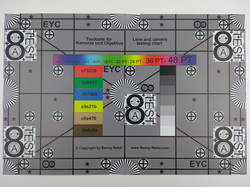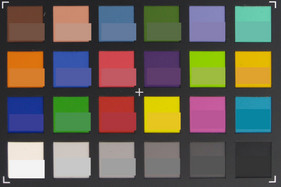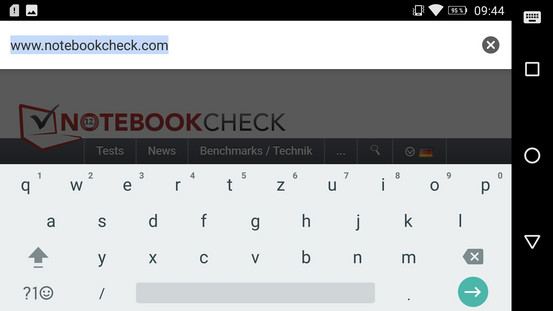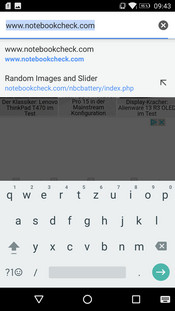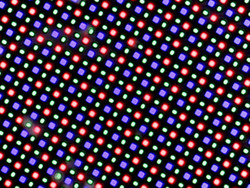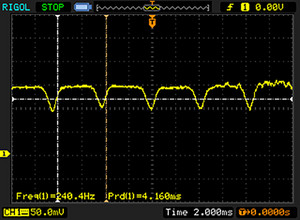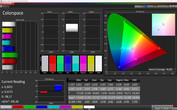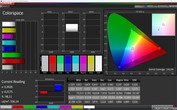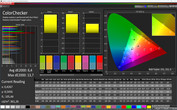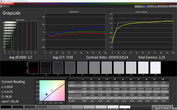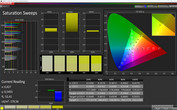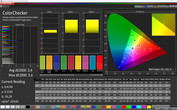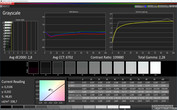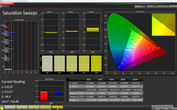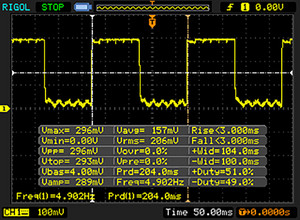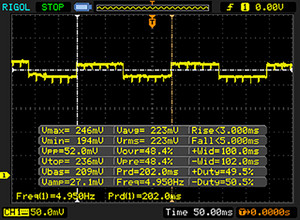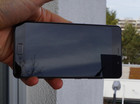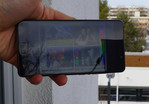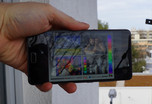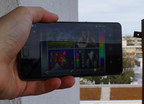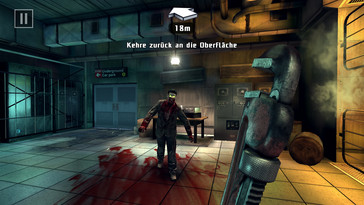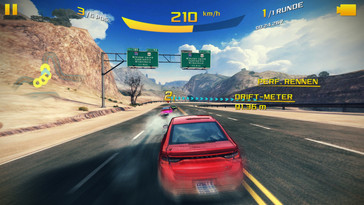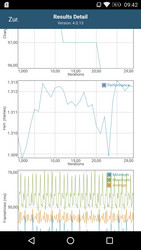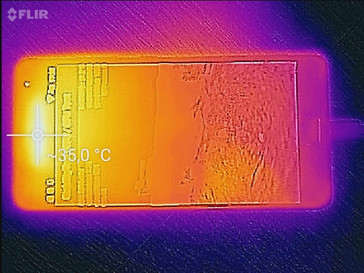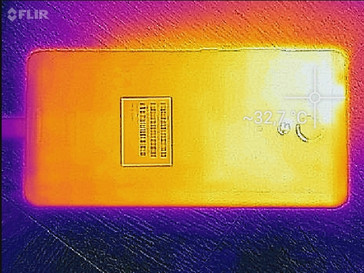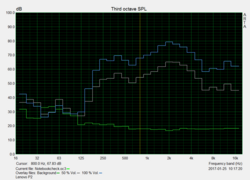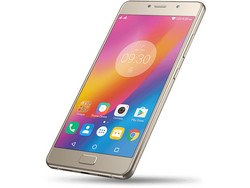Lenovo P2 Smartphone Review
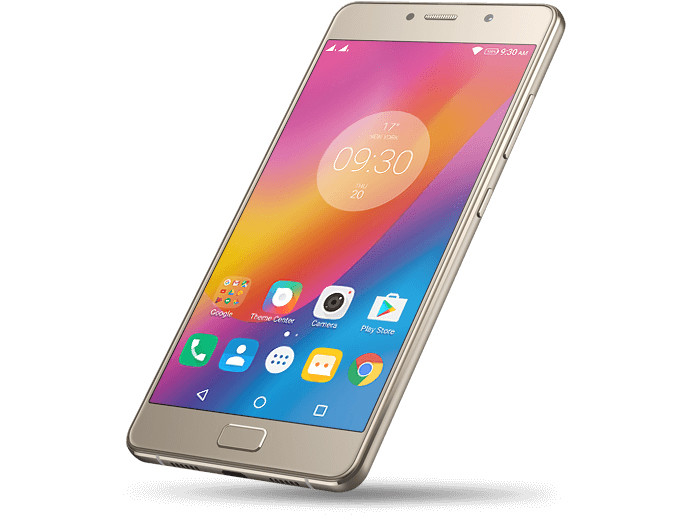
For the original German review, see here.
Powerful mid-range devices are presently a very popular smartphone sector among buyers. This is logical, as sophisticated technology, a high-quality casing and decent configuration are included in the price. Features that were exclusively found in high-end devices until now are installed for just half the price or even less here. Thus, this category is perfect for buyers not focused on the prestige of an iPhone or Galaxy S.
Lenovo has proved that it still knows how to deliver a bit more for the buck than its competitors. Lenovo's P2 upper mid-range handset is again well configured. Its gigantic battery stands out the most, but other features, such as 4 GB of working memory and fast LTE, are impressive.
There are many well-equipped competitors. The company's own Moto Z Play can be expanded via modular "Moto Mods", Asus' Zenfone 3 offers a particularly high storage capacity, and Alcatel's One Touch Idol 4S wants to score with an especially high-resolution screen. Samsung Galaxy A5 (2017) is the answer of the Korean manufacturer and comes with a water-resistant as well as a very high-resolution selfie camera.
Case
Lenovo's P2 is a smartphone with a 5.5-inch screen. Apart from the slightly smaller Samsung Galaxy A5 (2017), all comparison devices use this screen size as well. Lenovo only leaves a narrow edge beside the screen, and the casing's dimensions are compact. Lenovo's P2 is a few tenths of a millimeter thicker than most comparison devices, which is likely due to its gigantic battery. However, its outline is slim and only the back has a marginal outward curve. Weighing 177 grams (~6.2 oz), the smartphone is also a bit heavier than comparable devices, but Lenovo's P2 is comfortable to hold without feeling heavy.
The casing is made of metal, and 2.5D glass covers the front. The edges have been rounded nicely; the smartphone fits well in the user's hand. Color options are dark-gray with a black front and an overall gold-colored casing. The casing makes a high-quality impression; the design is very similar to that of other smartphones. When looking very closely, slightly irregular gaps can be found at the upper and lower edge of the rear-sided casing parts. The smartphone is well built otherwise. The battery is non-removable, and the back cover cannot be removed, either.
Connectivity
32 GB of storage, as in Lenovo's P2, are standard in almost all devices in this price range. However, Asus' Zenfone 3 even offers 64 GB. In return, our review sample can boast with 4 GB of working memory, which none of the comparison devices has. The storage can be expanded by up to 128 GB via a micro-SD, but then Lenovo's P2 does not support dual-SIM since the second SIM card slot is combined with the micro-SD slot. The USB port is not a Type-C port, and it can only transmit data at USB 2.0 speeds. Then again, it is possible to connect external storage devices via USB OTG, and the smartphone's gigantic battery can be used as a power bank for recharging other devices. NFC is also another positive aspect.
Software
The Android 6.0.1 operating system is installed alongside somewhat older security patches from 1st October 2016.
Fortunately, Lenovo installs only a few adware apps on its smartphone and some useful apps: In the "Theme Center", the operating system's looks can be configured to quite some extent and even the phone app or lock screen can be designed using different themes. "Lenovo Companion" is a support app for starting updates, checking the warranty status or diagnosing the system. Files can be shared via "SHAREit" and data can be synced with the cloud via "SYNCit". However, there are some minor translation errors, for example, "Caught you" for "Got you".
Interestingly, a "VR Mode" can be enabled that simply doubles the image on the screen and displays them beside each other.
Communication and GPS
Great that Lenovo supports the fast LTE Cat. 6 standard. Thus, Lenovo's P2 can access mobile Internet at a maximum of 300 MBit per second (download) and 50 MBit per second (upload). Ten LTE bands can be used, including four GSM and four UMTS frequencies, which should allow finding at least a suitable 4G-network in foreign countries. We also had a good LTE signal indoors in the well-developed, German Vodafone network in an urban area.
Lenovo's P2 is also well equipped in terms of Wi-Fi: With 802.11 a/b/g/n/ac, all standards common at present are covered including the less frequented and thus often faster 5 GHz band. We tested Lenovo's P2 in our standardized test using the Linksys EA8500 reference router in the 5 GHz band. The smartphone's reception performance is only midfield here, but its transmission speed of 216 MBit per second is absolutely outstanding. In practice, the reception in the router's vicinity was good and pages opened quickly. Only half the signal was displayed 10 meters (~33 ft) away from the router and through three walls, but pages still opened just as fast as beside the router.
| Networking | |
| iperf3 transmit AX12 | |
| Lenovo P2 | |
| Samsung Galaxy A5 2017 | |
| Lenovo Moto Z Play | |
| Alcatel One Touch Idol 4S | |
| Asus Zenfone 3 ZE552KL | |
| iperf3 receive AX12 | |
| Samsung Galaxy A5 2017 | |
| Lenovo Moto Z Play | |
| Lenovo P2 | |
| Alcatel One Touch Idol 4S | |
| Asus Zenfone 3 ZE552KL | |
The GPS module could not find our position indoors, but it did not take long to track us with an accuracy of three meters (~10 ft) outdoors. Lenovo's P2 measured a roughly 250-meter (~820 ft) shorter route than Garmin's Edge 500 in our practical test, i.e. an approximately 12-kilometer (~7.45 miles) bike trip. The smartphone does a good job in the crossing area, and it usually placed us in the middle of the road and tracked our position with many measuring points. However, Lenovo's P2 simply pulled a straight line on the bridge or took a shortcut. The professional navigation system is more accurate here. Nevertheless, the GPS module in Lenovo's P2 is definitely suitable for recreational navigation.
Telephone and Call Quality
Lenovo has modified the phone app slightly. For example, the keypad now has its own tab and can no longer be opened via a button like in the stock Android app. In return, calls can be recorded automatically, companies can be found via the Yellow Pages, and callers can be blocked directly.
The call quality has two sides to it: Lenovo's P2 is pleasing for its user, but not as much for the contact. The earpiece can be set very loudly and reproduces speech quite clearly. Humming or interference is not an issue. However, the microphone cuts off our words and our voice sounds slightly overdriven to the contact. The contact's voice almost sounds better when using hands-free mode, but then the microphone is not sensitive enough so that we have to speak quite loudly for the contact to understand us.
Cameras
Lenovo preloads proprietary camera software on the smartphone that includes some extended functions. In particular, the "intelligent composition" that (at test time) pointed to a successful composition and enabled better photos of people or food. The "smart" feature also selects the best photo mode when desired - but all this only functions with the primary camera. Some features can be set manually, such as the ISO sensitivity or white balance.
The primary camera has a resolution of 13 megapixels, phase detection autofocus, and a dual-LED flash. The front-facing camera has a resolution of 5 megapixels. Thus, Lenovo's P2 falls far behind in terms of pixel count; the comparison devices here all have more to offer. However, this is not necessarily a drawback as the photo quality is not only dependent on the recorded pixel count. In fact, the primary camera in Lenovo's P2 shoots decent photos. They are sharp, the colors look good, and many details can be recognized. At most, the exposure is a bit too dark. The 16-megapixel camera in Samsung's Galaxy A5 (2017) displays strange double outlines in some areas of the photo, but its exposure is somewhat better and the low-light photos are much sharper. Nevertheless, Lenovo's P2 is very suitable for everyday use.
Videos can be recorded in Full HD. There is a slow motion and time-lapse mode. They function as expected, but videos can then only be recorded in 720p. Additionally, it is possible to select areas that are to be slowed down in slow motion mode. Normal videos are also good, but unfortunately, the autofocus refocuses quite a lot when the scene changes and this looks unsightly. The exposure adapts to every scene accordingly, and it is also possible to set it manually.
The front-facing camera produces decent photos that could be somewhat sharper. Bright areas tend to overexpose, but details in dark areas is good in return. The quality is sufficient for occasional selfies.
The primary camera is reexamined under defined light conditions in our lab. We take a photo of our reference photo with it. Colored areas look pleasingly homogeneous here, and the sharpness in the center is good. However, the photo's sharpness deteriorates appreciably in some places (upper left) and is good in others. The contrast also becomes slightly weaker toward the edges in general.
White exhibits a visible yellowish tint as we discovered on our photo of the ColorChecker card; yellow is too bright and other colors, such as brown or purple, are too dark.
Accessories and Warranty
In addition to the USB charger, a USB cable, a SIM tool, and a quick start guide are in the box of Lenovo's P2. A headset for Lenovo's P2 is not included. In return, Lenovo delivers a USB OTG adapter that makes a lot of sense thanks to the gigantic battery in Lenovo's P2 and the option of using it as a power bank.
A headset by JBL can be ordered directly from Lenovo. It is, however, not yet available in the online shop. A modified VR headset that can be used with the incorporated VR mode is also listed. This naturally also functions with most other VR smartphone headsets. The headset by Lenovo is also not yet listed in the German online shop.
Please see our Guarantees, Return Policies and Warranties FAQ for country-specific warranty information.
Input Devices and Handling
Google's stock virtual keyboard app is installed. This is not a bad choice: It is user-friendly and provides word suggestions, swipe and voice dictation among other functions. Other keyboards can always be installed when preferred. The touchscreen is accurate and very easy to use. A glove mode for facilitating use in winter is also available. The onscreen menu buttons can be arranged freely; the somewhat protruding fingerprint scanner below the screen is a hardware button and can also be used as the home button.
The fingerprint scanner is very fast, and it usually identifies a saved fingerprint reliably. We rarely experienced that the fingerprint scanner did not respond when the screen was locked. The home screen opened immediately when a saved fingerprint was identified in standby. Other functions can also be mapped on the fingerprint scanner so that just one button takes over the entire menu control. This unfortunately only functioned moderately in our test; only Google search appeared instead of the screen with opened apps.
"Wide Touch" is Lenovo's name for an overlay that is displayed on the screen's left edge. It enables accessing various features and frequently used apps quickly. Furthermore, Lenovo installs many other control options, such as wake via double-tap on the standby screen, opening the camera via volume control, etc.
The right-hand hardware buttons are easy to feel and have a clear pressure point. A special highlight is on the left: a slider like in OnePlus' 2 or the iPhone that turns sounds on and off. However, it immediately triggers the energy-savings mode in Lenovo's P2. This is convenient when the battery is low, but it might have been a good idea to allow this slider to be mapped freely.
We are excited about the diversity of ideas that Lenovo has incorporated in the handling sector. Although not everything always functions perfectly, the smartphone's controls can be customized in many aspects exactly as the user would like handling to be.
Display
A 5.5-inch, Full HD panel and AMOLED technology are good prerequisites to compete with other devices in this price range. Unfortunately, the screen in Lenovo's P2 is much darker than in comparable models: An average of 477 cd/m² is not a bad rate, but all comparison handsets are much brighter. Interestingly, the rate in the realistic APL measurement was as high as 610 cd/m².
The brightness distribution of 91 percent is also a bit less homogeneous than in the comparison devices. It is, nevertheless, still on a very high level and colored areas still look relatively evenly illuminated.
| |||||||||||||||||||||||||
Brightness Distribution: 91 %
Center on Battery: 610 cd/m²
Contrast: ∞:1 (Black: 0 cd/m²)
ΔE ColorChecker Calman: 2.4 | ∀{0.5-29.43 Ø4.78}
ΔE Greyscale Calman: 2.8 | ∀{0.09-98 Ø5}
Gamma: 2.28
CCT: 6702 K
| Lenovo P2 AMOLED, 1920x1080, 5.5" | Lenovo Moto Z Play AMOLED, 1920x1080, 5.5" | Samsung Galaxy A5 2017 Super AMOLED, 1920x1080, 5.2" | Asus Zenfone 3 ZE552KL IPS, 1920x1080, 5.5" | Alcatel One Touch Idol 4S AMOLED, 2560x1440, 5.5" | |
|---|---|---|---|---|---|
| Screen | 8% | 27% | -34% | -46% | |
| Brightness middle (cd/m²) | 479 | 509 6% | 539 13% | 658 37% | 625 30% |
| Brightness (cd/m²) | 477 | 511 7% | 542 14% | 633 33% | 639 34% |
| Brightness Distribution (%) | 91 | 93 2% | 93 2% | 93 2% | 92 1% |
| Black Level * (cd/m²) | 0.66 | ||||
| Colorchecker dE 2000 * | 2.4 | 2.2 8% | 1.6 33% | 4.9 -104% | 5.9 -146% |
| Colorchecker dE 2000 max. * | 5.6 | 5.8 -4% | 2.6 54% | 9.1 -63% | 14.6 -161% |
| Greyscale dE 2000 * | 2.8 | 2 29% | 1.5 46% | 5.8 -107% | 3.8 -36% |
| Gamma | 2.28 96% | 2.25 98% | 2.28 96% | 2.26 97% | 2.27 97% |
| CCT | 6702 97% | 6768 96% | 6422 101% | 7840 83% | 7196 90% |
| Contrast (:1) | 997 |
* ... smaller is better
Screen Flickering / PWM (Pulse-Width Modulation)
| Screen flickering / PWM detected | 240.4 Hz | ||
The display backlight flickers at 240.4 Hz (worst case, e.g., utilizing PWM) . The frequency of 240.4 Hz is relatively low, so sensitive users will likely notice flickering and experience eyestrain at the stated brightness setting and below. In comparison: 53 % of all tested devices do not use PWM to dim the display. If PWM was detected, an average of 8111 (minimum: 5 - maximum: 343500) Hz was measured. | |||
By simply deactivating individual pixels completely, an absolute black is produced on the screen. This theoretically boosts the contrast into infinity and colors look more intense. This is the case also in Lenovo's P2. Two color modes are available: "Normal" and "Intensive".
The color shifts in the "Normal" mode are pleasingly low. However, both the Galaxy A5 (2017) and the Moto Z Play reproduce colors a bit more accurately. Only a very minor bluish tint is ascertained in the grayscale levels in "Normal" mode. This bluish tint is a bit stronger in the "Intensive" mode and the colors are not as accurate. The sRGB color space is covered completely. The screen in Lenovo's P2 can reproduce considerably more color tones and even the more demanding AdobeRGB color space is covered to a large degree.
AMOLED screens unfortunately often use pulse-width modulation for dimming. This means that the screen is disabled for fractions of a second and the entire screen looks darker to the eye. This happens in Lenovo's P2 240 times per second at a brightness setting of 20 percent. Sensitive users might perceive this as flickering.
Display Response Times
| ↔ Response Time Black to White | ||
|---|---|---|
| 6 ms ... rise ↗ and fall ↘ combined | ↗ 3 ms rise | |
| ↘ 3 ms fall | ||
| The screen shows very fast response rates in our tests and should be very well suited for fast-paced gaming. In comparison, all tested devices range from 0.1 (minimum) to 240 (maximum) ms. » 17 % of all devices are better. This means that the measured response time is better than the average of all tested devices (20.2 ms). | ||
| ↔ Response Time 50% Grey to 80% Grey | ||
| 8 ms ... rise ↗ and fall ↘ combined | ↗ 3 ms rise | |
| ↘ 5 ms fall | ||
| The screen shows fast response rates in our tests and should be suited for gaming. In comparison, all tested devices range from 0.165 (minimum) to 636 (maximum) ms. » 19 % of all devices are better. This means that the measured response time is better than the average of all tested devices (31.6 ms). | ||
Glossy screens, as used in the majority of smartphones, are generally not very suitable for outdoor use since they reflect bright surroundings and make it difficult for the eye to recognize the actual content. The high brightness of most mid-range smartphones helps to still see something even in brighter environments. This is also the case in Lenovo's P2.
The AMOLED screen additionally offers almost perfect viewing angles from all sides; a light color fog is, at most, seen from very flat angles.
Performance
Lenovo's P2 is furnished with Qualcomm's Snapdragon 625. This mid-range SoC is built in the 14nm process, has 8 processor cores, and clocks at up to 2 GHz. The popular processor that is approximately one year old at test time is also found in the Zenfone 3 and Moto Z Play.
In fact, the processor performance of these three smartphones is also quite similar in most benchmarks. Overall, Lenovo's P2 offers exactly the performance expected in this category; it does not stand out significantly or lag behind the comparison devices in total.
The Adreno 506 calculates graphics in Lenovo's P2. It clocks at a maximum of 650 MHz and supports all graphic APIs, such as Vulkan and OpenGL 3.2. The graphics performance of Lenovo's P2 also presents itself on class average in the benchmarks. Samsung's Galaxy A5 (2017) stands out positively here.
| AnTuTu v6 - Total Score (sort by value) | |
| Lenovo P2 | |
| Lenovo Moto Z Play | |
| Samsung Galaxy A5 2017 | |
| Asus Zenfone 3 ZE552KL | |
| Alcatel One Touch Idol 4S | |
| Geekbench 4.0 | |
| 64 Bit Single-Core Score (sort by value) | |
| Lenovo P2 | |
| Lenovo Moto Z Play | |
| Samsung Galaxy A5 2017 | |
| Asus Zenfone 3 ZE552KL | |
| Alcatel One Touch Idol 4S | |
| 64 Bit Multi-Core Score (sort by value) | |
| Lenovo P2 | |
| Lenovo Moto Z Play | |
| Samsung Galaxy A5 2017 | |
| Asus Zenfone 3 ZE552KL | |
| Alcatel One Touch Idol 4S | |
| GFXBench (DX / GLBenchmark) 2.7 | |
| T-Rex Onscreen (sort by value) | |
| Lenovo P2 | |
| Lenovo Moto Z Play | |
| Samsung Galaxy A5 2017 | |
| Asus Zenfone 3 ZE552KL | |
| Alcatel One Touch Idol 4S | |
| 1920x1080 T-Rex Offscreen (sort by value) | |
| Lenovo P2 | |
| Lenovo Moto Z Play | |
| Samsung Galaxy A5 2017 | |
| Asus Zenfone 3 ZE552KL | |
| Alcatel One Touch Idol 4S | |
| GFXBench 3.0 | |
| on screen Manhattan Onscreen OGL (sort by value) | |
| Lenovo P2 | |
| Lenovo Moto Z Play | |
| Samsung Galaxy A5 2017 | |
| Asus Zenfone 3 ZE552KL | |
| Alcatel One Touch Idol 4S | |
| 1920x1080 1080p Manhattan Offscreen (sort by value) | |
| Lenovo P2 | |
| Lenovo Moto Z Play | |
| Samsung Galaxy A5 2017 | |
| Asus Zenfone 3 ZE552KL | |
| Alcatel One Touch Idol 4S | |
| GFXBench 3.1 | |
| on screen Manhattan ES 3.1 Onscreen (sort by value) | |
| Lenovo P2 | |
| Lenovo Moto Z Play | |
| Samsung Galaxy A5 2017 | |
| Asus Zenfone 3 ZE552KL | |
| Alcatel One Touch Idol 4S | |
| 1920x1080 Manhattan ES 3.1 Offscreen (sort by value) | |
| Lenovo P2 | |
| Lenovo Moto Z Play | |
| Samsung Galaxy A5 2017 | |
| Asus Zenfone 3 ZE552KL | |
| Alcatel One Touch Idol 4S | |
| PCMark for Android - Work performance score (sort by value) | |
| Lenovo P2 | |
| Lenovo Moto Z Play | |
| Samsung Galaxy A5 2017 | |
| Asus Zenfone 3 ZE552KL | |
| Alcatel One Touch Idol 4S | |
According to the benchmarks, Lenovo's P2 is marginally slower than the comparison devices in Internet browsing. However, it is still fast in practice and even browsing on intricate HTML5 pages functions smoothly.
| Mozilla Kraken 1.1 - Total (sort by value) | |
| Lenovo P2 | |
| Lenovo Moto Z Play | |
| Samsung Galaxy A5 2017 | |
| Asus Zenfone 3 ZE552KL | |
| Alcatel One Touch Idol 4S | |
| Octane V2 - Total Score (sort by value) | |
| Lenovo P2 | |
| Lenovo Moto Z Play | |
| Samsung Galaxy A5 2017 | |
| Asus Zenfone 3 ZE552KL | |
| Alcatel One Touch Idol 4S | |
| JetStream 1.1 - Total Score (sort by value) | |
| Lenovo P2 | |
| Lenovo Moto Z Play | |
| Samsung Galaxy A5 2017 | |
| Asus Zenfone 3 ZE552KL | |
| Alcatel One Touch Idol 4S | |
| WebXPRT 2015 - Overall (sort by value) | |
| Lenovo P2 | |
| Lenovo Moto Z Play | |
| Samsung Galaxy A5 2017 | |
| Asus Zenfone 3 ZE552KL | |
* ... smaller is better
Storage access speed is yet another very positive aspect of Lenovo's P2. We first look at how fast the internal storage is accessed: Although other devices are also fast, Lenovo's P2 manages to maintain a high speed even in random storage access. This is reflected in just as fast loading times.
Accessing the inserted micro-SD card is also relatively fast: Lenovo's P2 even places itself at the top in the test with our Toshiba reference micro-SD card.
Games
Lenovo's P2 always achieved at least 30 frames per second in the relatively demanding 3D games tested. Some games, such as "Asphalt 8" and "Dead Trigger 2" ran smoothly even in maximum details. As expected, more basic games, such as "Angry Birds", are no problem.
Control via touchscreen and position sensor functioned very accurately.
| Asphalt 8: Airborne | |||
| Settings | Value | ||
| high | 30 fps | ||
| very low | 30 fps | ||
| Dead Trigger 2 | |||
| Settings | Value | ||
| high | 55 fps | ||
Emissions
Temperature
The SoC's performance remains stable even during prolonged load. We can confirm this using the battery test in GFXBench 2.7 that renders the same sequence thirty times and logs the frame rates of each run. We can assert this since the frame rates hardly vary here.
This is not surprising as the casing temperatures do not change much even during high load. We measured a maximum temperature of 32 °C (89.6 °F), which is barely palpable and also very limited to one area. The SoC's 14nm processing apparently really pays off here. The device's temperature hardly increased in idle mode: We measured a maximum of 27.6 °C (80.6 °F) here.
(+) The maximum temperature on the upper side is 32 °C / 90 F, compared to the average of 35.2 °C / 95 F, ranging from 21.9 to 247 °C for the class Smartphone.
(+) The bottom heats up to a maximum of 29.5 °C / 85 F, compared to the average of 34 °C / 93 F
(+) In idle usage, the average temperature for the upper side is 26.7 °C / 80 F, compared to the device average of 32.9 °C / 91 F.
Speaker
The speaker is another nice surprise: The little speaker that Lenovo hides on the lower edge can get quite loud. It only overdrives with difficulty even at maximum volume. Furthermore, bass vibrations are very palpable when holding the smartphone. In any case, listening to pop music is really very enjoyable with Lenovo's P2. However, a foundation of low mids and basses is a bit absent for classical music, but the sound quality is much better than in other smartphones from this category. The little speaker even conveys the atmosphere of video soundtracks well.
The 3.5-mm headset jack functions impeccably and transmits a clear sound. The same is true for Bluetooth connections.
Lenovo P2 audio analysis
(+) | speakers can play relatively loud (85.7 dB)
Bass 100 - 315 Hz
(-) | nearly no bass - on average 17.1% lower than median
(±) | linearity of bass is average (13.9% delta to prev. frequency)
Mids 400 - 2000 Hz
(±) | higher mids - on average 5.2% higher than median
(+) | mids are linear (6.9% delta to prev. frequency)
Highs 2 - 16 kHz
(±) | higher highs - on average 6.7% higher than median
(±) | linearity of highs is average (7.1% delta to prev. frequency)
Overall 100 - 16.000 Hz
(±) | linearity of overall sound is average (18.4% difference to median)
Compared to same class
» 19% of all tested devices in this class were better, 9% similar, 72% worse
» The best had a delta of 11%, average was 35%, worst was 134%
Compared to all devices tested
» 40% of all tested devices were better, 8% similar, 53% worse
» The best had a delta of 4%, average was 24%, worst was 134%
Samsung Galaxy A5 2017 audio analysis
(+) | speakers can play relatively loud (83 dB)
Bass 100 - 315 Hz
(-) | nearly no bass - on average 15.5% lower than median
(±) | linearity of bass is average (9.1% delta to prev. frequency)
Mids 400 - 2000 Hz
(±) | higher mids - on average 9.4% higher than median
(±) | linearity of mids is average (7.6% delta to prev. frequency)
Highs 2 - 16 kHz
(±) | higher highs - on average 5% higher than median
(±) | linearity of highs is average (7.6% delta to prev. frequency)
Overall 100 - 16.000 Hz
(±) | linearity of overall sound is average (23.6% difference to median)
Compared to same class
» 53% of all tested devices in this class were better, 8% similar, 39% worse
» The best had a delta of 11%, average was 35%, worst was 134%
Compared to all devices tested
» 70% of all tested devices were better, 6% similar, 24% worse
» The best had a delta of 4%, average was 24%, worst was 134%
Frequency diagram in comparison (checkboxes above can be turned on/off!)
Energy Management
Power Consumption
The smartphone does not consume power when turned off, and 0.23 watts in standby is also moderate. This continues in idle mode where a maximum of 1.03 watts are required. The absolute maximum consumption is 3.98 watts. We also liked the fact that Lenovo's P2 is also very energy efficient in load and only consumes 1.78 watts on average. Although Lenovo has done a slightly better job with the power consumption of its Moto Z Play, Lenovo's P2 is a very frugal smartphone.
| Off / Standby | |
| Idle | |
| Load |
|
Key:
min: | |
| Lenovo P2 5100 mAh | Lenovo Moto Z Play 3510 mAh | Samsung Galaxy A5 2017 3000 mAh | Asus Zenfone 3 ZE552KL 3000 mAh | Alcatel One Touch Idol 4S 3000 mAh | |
|---|---|---|---|---|---|
| Power Consumption | 7% | -25% | -80% | -70% | |
| Idle Minimum * (Watt) | 0.54 | 0.51 6% | 0.64 -19% | 0.83 -54% | 0.76 -41% |
| Idle Average * (Watt) | 1.01 | 0.87 14% | 1.36 -35% | 2.11 -109% | 1.02 -1% |
| Idle Maximum * (Watt) | 1.03 | 0.9 13% | 1.4 -36% | 2.12 -106% | 1.04 -1% |
| Load Average * (Watt) | 1.78 | 1.69 5% | 2.53 -42% | 3.41 -92% | 4.4 -147% |
| Load Maximum * (Watt) | 3.98 | 4 -1% | 3.63 9% | 5.46 -37% | 10.4 -161% |
* ... smaller is better
Battery Runtime
Low power consumption + gigantic battery = ? We will now solve this equation: It should be beyond doubt that the battery in Lenovo's P2 is still looking for its equal in view of a capacity of 5100 milliampere hours or 19.38 watt hours. Many tablets do not offer a much higher capacity.
This results in excellent practical runtimes of 16:18 hours in Wi-Fi browsing or almost 20 hours of non-stop video entertainment. The smartphone lasts over 47 hours when idling and almost 9 hours (!) during full load. These are really great outcomes. Furthermore, Lenovo's P2 is recharged in less than 2 hours thanks to Quick Charge, and the battery capacity is conveniently stretched even more when the energy-savings slider on the casing's left is triggered.
In practice, we did not have to recharge the handset during our tests (apart from the battery tests). We could perform all benchmarks and tests, and still had a rest battery capacity of 30 percent. Thus, Lenovo's P2 will easily last two to three workdays in practice. Even when the handset is permanently under full load, more than a workday should be possible. Users who do not use their smartphone very often might even last a work week without recharging.
| Lenovo P2 5100 mAh | Lenovo Moto Z Play 3510 mAh | Samsung Galaxy A5 2017 3000 mAh | Asus Zenfone 3 ZE552KL 3000 mAh | Alcatel One Touch Idol 4S 3000 mAh | |
|---|---|---|---|---|---|
| Battery runtime | -1% | -14% | -31% | -58% | |
| Reader / Idle (h) | 47.4 | 42.3 -11% | 40.3 -15% | 25 -47% | |
| H.264 (h) | 20 | 19.8 -1% | 16.4 -18% | 15.1 -24% | |
| WiFi v1.3 (h) | 16.3 | 13.7 -16% | 14.1 -13% | 13.3 -18% | 6.9 -58% |
| Load (h) | 8.8 | 10.9 24% | 7.8 -11% | 5.9 -33% |
Pros
Cons
Verdict
We already mentioned that the battery life of Lenovo's P2 is fantastic in the introduction. However, we were really surprised that Lenovo has created such an overall complete handset. An elegant and solid casing, decent performance rates, relatively sharp camera photos, diverse options for adapting the controls, a quite color accurate AMOLED screen, a superb speaker, and low temperatures do not leave much room for criticism at first glance.
Some aspects that can be criticized are found when looking closer, for example, the sometimes poorly translated software, the screen's comparatively low brightness, and the light bluish tint. The microphone is not perfect, either, and the camera photos are unfocused in some places. Overall, these are small issues, some of which could be improved via software updates. Unfortunately, they prevent Lenovo's P2 from receiving a "very good" rating.
Lenovo's P2 is a strong mid-range handset that hardly exhibits weaknesses and shines particularly in terms of battery life and speaker sound.
However, Lenovo's P2 is a superb device that everyone looking for a mid-range smartphone should put on their list. The P2 will particularly please users who appreciate a long battery life.
Lenovo P2
- 02/24/2017 v6 (old)
Florian Wimmer




